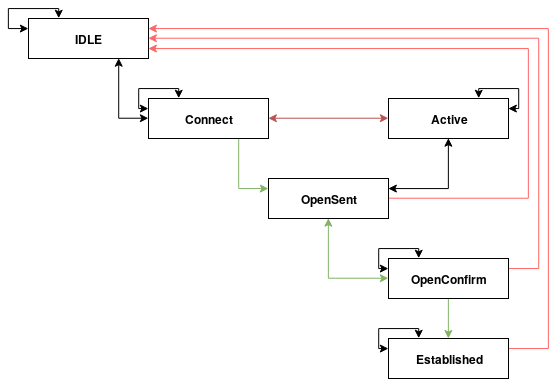This post will take a quick look into the BGP Finite State model.
IDLE: Link to heading
This is the first state and essentially means a session is inactive waiting for a start event which can be manual or automatic. I’ll need to look into Junipers definitions of a start event.
Connect: Link to heading
After a start event BGP will try to establish a TCP connection. A session will remain in the Connect state until either a TCP session is formed or the TCP handshake failed.
Active: Link to heading
Should the TCP handshake fail BGP will transition the session into the Active state and reattempt to form a TCP session. If this again fails BGP will pass the session back to the connect state, this process will repeat until a TCP handshake is established or the BGP session is set back to IDLE.
OpenSent: Link to heading
Once the TCP session is established BGP will send an Open packet detailing some BGP information that should be negatiated between peers.
OpenConfirm: Link to heading
A keepalive message is follow the Open message to confirm the peer recieved the Open packet. Once the keepalive packet is recieved it will transition to established.
Established: Link to heading
All systems are go! The final and steady state for BGP is established. In this state routing information can be exchanged between peers. This is often the state to monitor for via SNMP or your other choice of monitoring poision.
